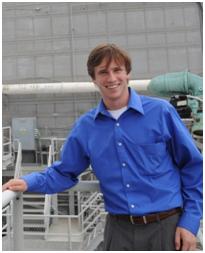The Space Generation Advisory Council’s (SGAC) Near Earth Object Working Group is happy to announce the winner of the third annual Move an Asteroid technical paper competition, Ben Corbin of the United States. The prize for this competition is a fully-paid trip to Prague, Czech Republic to attend and present the paper at SGC 2010 and the International Astronautical Congress 2010. The package includes round trip airfare, hotel, and registration fees for both conferences. Ben’s presentation and paper will be available on the SGAC website following the conferences in Prague (see below for the abstract).
This third edition of the competition challenged students and young professionals worldwide to come up with ideas for a global asteroid impact early warning system. Contestants were asked to address some or all of the four elements devised to meet the threat of asteroids. The applications were very creative and are a testimony of when the right young minds are given the right opportunity, great ideas can flourish. It was a fantastic collection of ideas and insights. The essays were comprehensive and innovative. We would like to extend our congratulations to all applicants and their impressive effort.
This year’s winner, Ben Corbin, is currently finishing his double Masters in Aerospace Engineering and Planetary Science at the Massachusetts Institute of Technology and will begin his Ph.D. work in Space Systems Engineering in 2011. He serves as Flight Engineer for Project VeSpR, a sounding rocket mission to study Venus’ atmosphere. Ben graduated from the University of Central Florida (UCF) in 2008 with a Bachelor of Science in Aerospace Engineering with minors in Mathematics, Physics, and Astronomy. He received the Astronaut Scholarship for his research in flame speed gas dynamics. Ben was also one of the youngest ever participants at the International Space University’s Space Studies Program in 2007.
Ben is involved with a number of space-related extracurricular activities. Recently, he was chosen to be a Flight Member with Astronauts4Hire, a non-profit that seeks to train suborbital scientist astronauts for private research. He has designed and built three scientific experiments for microgravity flights and served as the Chief Engineer at the Mars Desert Research Station. He has served as President at both the UCF and MIT chapters of the Students for the Exploration and Development of Space (SEDS). Ben has publications on a variety of space subjects, including analog spacesuit design, human missions to a near-Earth object, and planetary hoppers.
Commenting on his achievement, Ben expressed his excitement in returning to SGC: “I’m very excited to present my work at both the Space Generation Congress and the International Astronautical Congress. I’m looking forward to meeting delegates from around the world and talking with them about how to better present a unified plan for defending Earth from the hazards of near-Earth objects. I haven’t been able to attend SGC since 2007, and I can’t wait to meet new SGC attendees since the last time I was able to go!”
SGAC would like to commend and thank the volunteer members of the Near-Earth Object (NEO) Working Group for their hard work in holding this competition once again. For more information on the NEO Working Group, including how to join it, please see here.
2010 Move an Asteroid Winning Paper Abstract:
“Implementing Advanced Technologies and Models to Reduce Uncertainty in a Global, Cost-Effective Asteroid Mitigation System”
A number of strategies for dealing with the global nature of near-Earth object (NEO) impacts have been proposed by various organizations, but many fail to properly emphasize how important reducing the uncertainty of a potential impact is for making life-saving, cost-effective decisions without causing panic among the general public. Finding and tracking NEOs with unprecedented levels of precision can be done by enhancing existing ground-based telescopes, using a space-based telescope in a Solar orbit close to Venus, and using multiple systems together to more precisely catalog and track NEOs. Increasing the accuracy of tracking NEOs can be accomplished with better models of small body perturbation forces. While missions to a NEO for the sake of mitigation may not be cost-effective, future planned missions can provide unprecedented benefit for developing and validating models of NEO characteristics and testing deflection techniques. Better modeling of the effects of impacts, such as airbursts and tsunamis, is also useful for reducing uncertainty. All of these technologies and models can be integrated into an effective decision-making plan. An example of an automated decision-making warning system is shown that can still work even under high uncertainty.
Source: Space Generation Advisory Council, SGAC Announces the Winner of the 2010 Move an Asteroid Competition, 26 August, 2010
